October 24, 2025
Top 7 Recruiting Tools For HR To Streamline Hiring In 2025
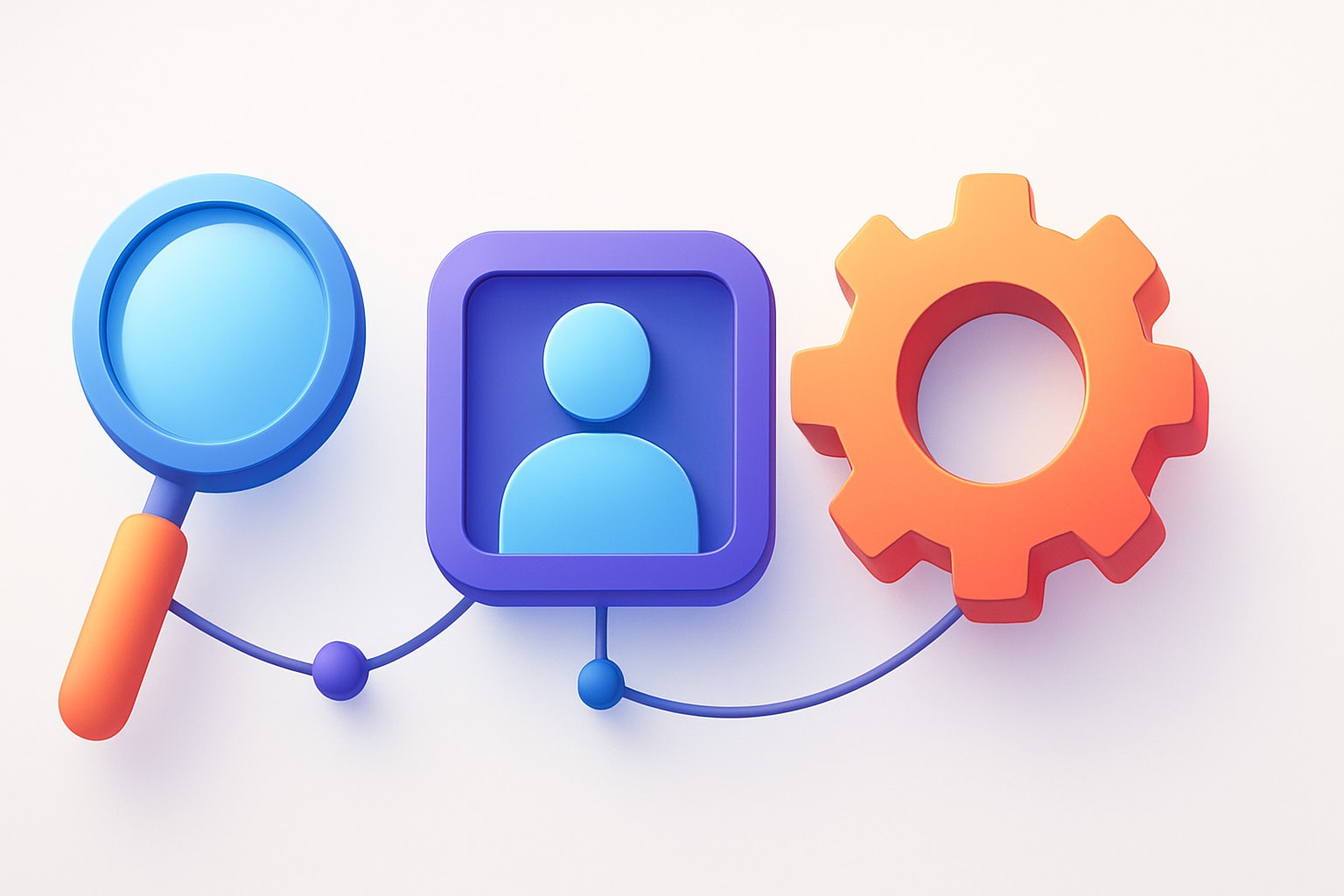
HR technology is advancing at a breakneck pace, making the hiring landscape in 2025 more complex and competitive than ever. HR teams now face overwhelming applicant numbers, time-consuming manual screening, and the growing demand for a seamless, bias-free recruitment process.
To address these challenges, this article uncovers the top 7 recruiting tools for hr that will empower professionals to hire faster, attract higher-quality candidates, and boost overall efficiency. Each tool has been selected for its innovation, measurable impact, and unique features, ensuring HR leaders are fully equipped to succeed in the year ahead.
The Changing Landscape of HR Recruitment in 2025
HR recruitment is undergoing a seismic shift as digital transformation and artificial intelligence become the new standard. In 2025, remote work is no longer a trend but a norm, unlocking access to global talent pools and making skills-based hiring a competitive necessity. HR teams are under pressure to adapt to these changes, leveraging recruiting tools for hr that offer both innovation and scalability. According to industry insights, HR technology trends for 2025 emphasize the need for seamless digital solutions that keep organizations agile and competitive.
The recruitment process now faces unprecedented complexity. With job postings reaching broader audiences, application volumes have soared. Data shows that up to 60 percent of job seekers abandon applications they find too complex, underscoring the need for streamlined processes. At the same time, 73 percent of companies are actively sourcing candidates through social media, further expanding the size and diversity of applicant pools. HR leaders must balance the demand for speed with the expectation of a positive candidate experience, all while meeting diversity and inclusion benchmarks.
Modern recruiting tools for hr are at the heart of overcoming these challenges. Automation now handles repetitive tasks like CV screening, freeing recruiters to focus on high-value interactions. Integrated analytics track critical KPIs, such as time-to-fill and source effectiveness, enabling HR teams to fine-tune their hiring strategies in real time. Seamless integrations between applicant tracking systems, assessment platforms, and communication tools are becoming essential for efficient, end-to-end recruitment workflows.
Organizations that have embraced advanced recruiting tools for hr report significant improvements in both speed and quality of hire. For example, leading companies have cut their time-to-hire in half and increased the accuracy of candidate matches by adopting AI-powered solutions. These results are not just anecdotal—they signal a broader trend toward data-driven, candidate-centric hiring.
As the talent landscape continues to evolve, future-proofing recruitment strategies is more important than ever. HR professionals need to invest in recruiting tools for hr that not only address today’s challenges but also anticipate tomorrow’s demands. The right technology stack will empower teams to attract, evaluate, and retain top talent in a competitive global market.
Top 7 Recruiting Tools For HR To Streamline Hiring In 2025
The landscape of recruiting tools for hr is evolving rapidly, with innovation, user experience, and measurable impact at the forefront. HR leaders need solutions that not only tackle applicant volume but also improve candidate quality, reduce bias, and integrate seamlessly with existing workflows. The following list presents the top seven recruiting tools for hr in 2025, each carefully selected for its ability to address unique hiring challenges. Whether you are a startup, agency, or enterprise, these platforms are designed to empower your team and drive results in a competitive talent market.
Klearskill
Klearskill stands out among recruiting tools for hr as an AI-powered recruitment platform built for speed and accuracy. The platform specializes in rapid CV screening and intelligent candidate ranking, saving HR teams significant time during the early stages of hiring.

Its automated shortlisting feature uses customizable AI analysis to evaluate applicant data, while deep integration with leading ATS solutions ensures a seamless workflow. Visual pipeline management gives recruiters a clear overview of candidate progress, and advanced analytics provide actionable insights into hiring performance.
Klearskill delivers measurable benefits, including up to 92% reduction in screening time, 97% match accuracy, and 99% bias reduction. Its plug-and-play deployment means HR teams can start optimizing their processes right away, making it one of the most efficient recruiting tools for hr available.
The platform targets startups (with free access), agencies, and enterprise-level HR teams. Pros include hyper-relevant shortlisting, seamless ATS integration, and bias-free evaluation, all of which are critical for high-volume hiring. The only notable drawback is that detailed pricing requires direct inquiry.
For organizations prioritizing automation and early-stage candidate selection, Klearskill is an ideal choice. To explore more innovative AI-powered options, see this Best AI Recruiting Tools guide.
Lever
Lever has become a staple among recruiting tools for hr, offering a modern applicant tracking system (ATS) with a strong focus on analytics and usability. Its core features include robust pipeline management, automated pre-screening, collaborative hiring workflows, and detailed reporting.
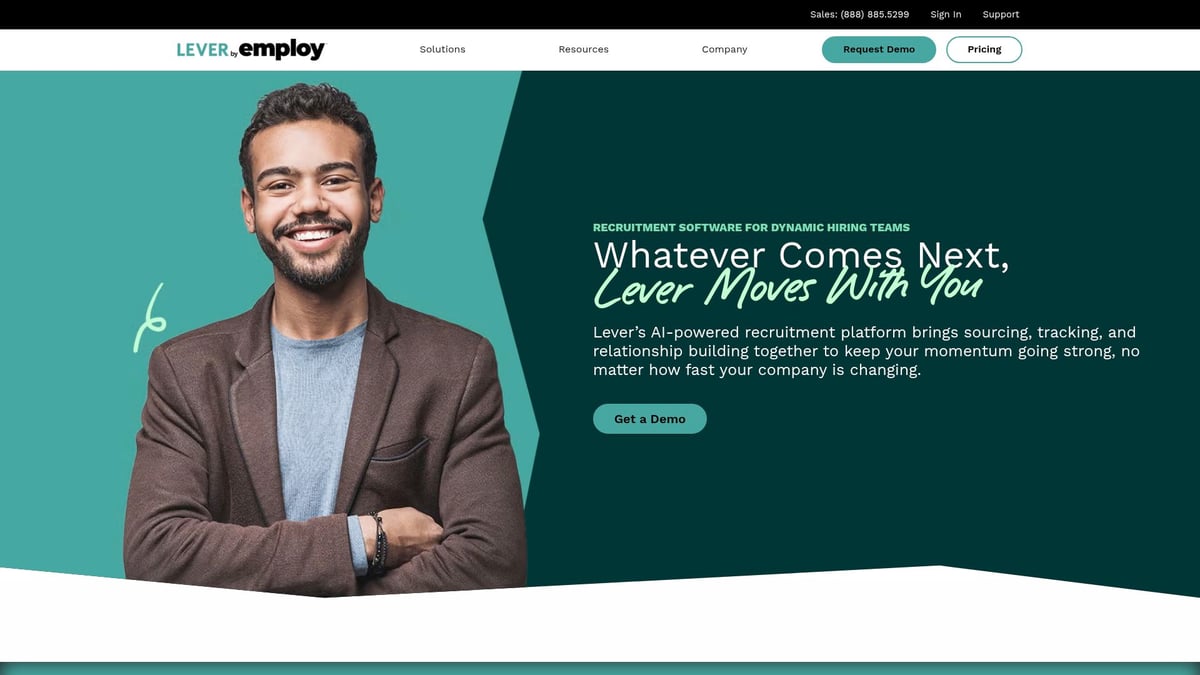
The platform’s intuitive UI allows HR teams to manage every step of the recruitment process in one place. Lever’s collaborative tools enable seamless communication between recruiters and hiring managers, ensuring faster decisions and improved candidate tracking.
With custom pricing and a free trial available, Lever is best suited for mid-sized to large organizations seeking end-to-end workflow management. Its easy integration with other HR systems and detailed analytics make it a top choice among recruiting tools for hr, especially for teams looking to centralize their operations.
The main advantage is its comprehensive functionality, though smaller teams may find the feature set overwhelming. Companies that need a powerful, scalable solution for the entire recruitment lifecycle will benefit most from Lever’s capabilities.
Vervoe
Vervoe is redefining skills-based hiring as one of the leading recruiting tools for hr. The platform enables HR professionals to create customizable skill tests, AI-driven grading, and personality assessments, all integrated with major ATS platforms.
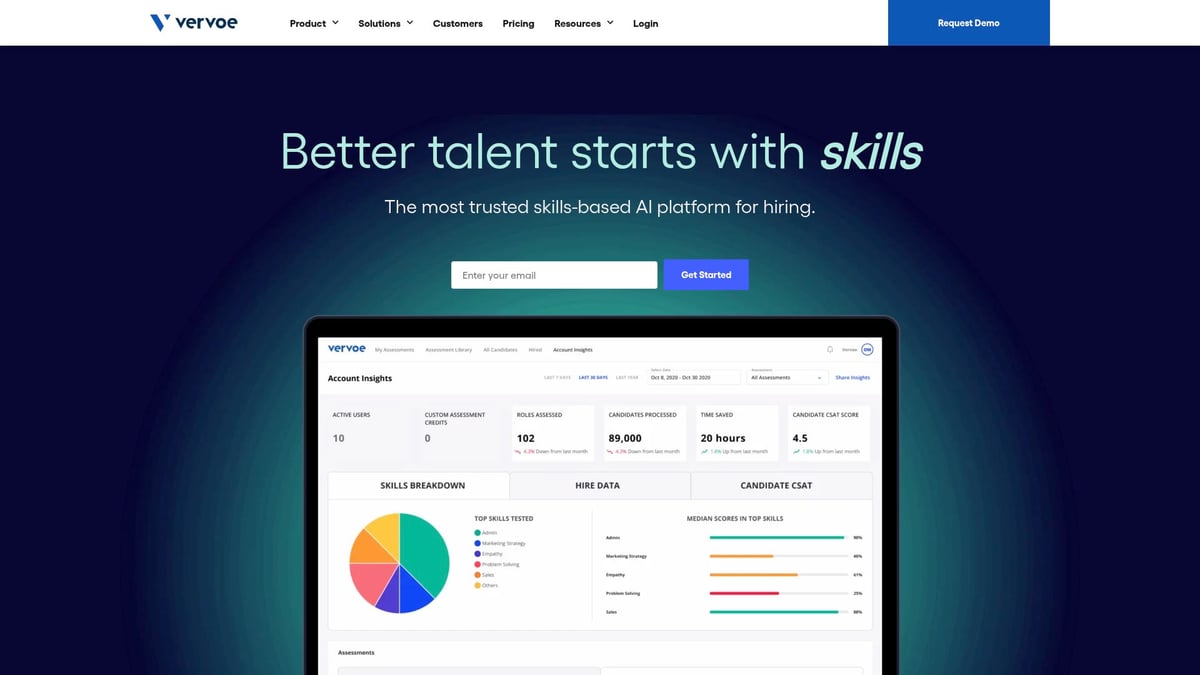
Vervoe’s automated assessments verify candidate abilities, ensuring that only the most qualified applicants advance to the next stage. Its diverse test library covers technical, creative, and specialized roles, making it versatile for any industry.
The tool offers tiered pricing plans with a free trial, making it accessible for HR teams of all sizes. Vervoe’s strong analytics help optimize hiring decisions, while automated grading reduces bias and streamlines the process.
Some users may experience a learning curve when creating custom assessments, but the payoff is a more effective and efficient hiring workflow. Organizations that receive high applicant volume and want to focus interviews on top performers will find Vervoe among the most practical recruiting tools for hr.
Teamable
Teamable brings a technology-driven approach to employee referrals, positioning itself as a unique entry in the world of recruiting tools for hr. The platform leverages network scanning, automated outreach, and referral tracking to tap into employees’ connections and expand the talent pool.

By formalizing and scaling referral programs, Teamable helps companies increase referral hires and reduce recruitment costs. Its analytics dashboard provides visibility into referral performance, while seamless integration with existing HR systems ensures a smooth user experience.
Teamable’s pricing is available via custom quotes, and it’s ideally suited for organizations focused on culture fit and trusted candidate recommendations. The platform incentivizes referrals, making it easier for HR teams to proactively source passive talent.
The main consideration is that its effectiveness depends on employee engagement with the referral process. For companies seeking to unlock the power of their workforce’s networks, Teamable stands out among recruiting tools for hr.
TapRecruit
TapRecruit is an AI-driven job description optimization tool designed to improve clarity, inclusivity, and search visibility. Its language analysis and bias detection features help HR professionals craft job ads that attract a diverse pool of qualified candidates.
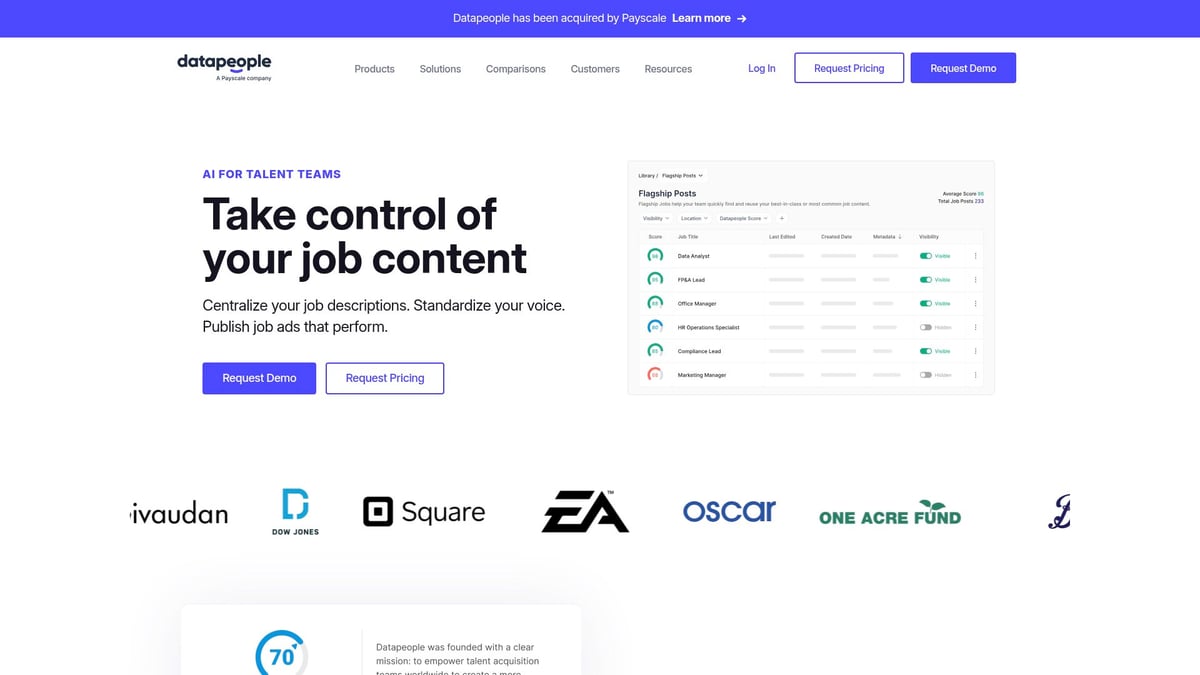
Readability scoring and actionable recommendations guide users in refining their messaging, enhancing both candidate experience and employer branding. TapRecruit’s subscription-based pricing model, with a demo available, makes it accessible for organizations of various sizes.
While the platform’s functionality is focused on job description optimization, its impact on application rates and diversity is significant. HR teams seeking to reduce bias and increase the effectiveness of their job ads will find TapRecruit to be an essential addition to their suite of recruiting tools for hr.
Companies using TapRecruit report measurable improvements in both the volume and quality of applicants, demonstrating the value of thoughtful, data-driven job postings.
Hiretual
Hiretual sets itself apart among recruiting tools for hr as an AI-powered sourcing and candidate relationship management platform. Its multi-channel sourcing capabilities and talent mapping features allow recruiters to identify and engage passive candidates effectively.
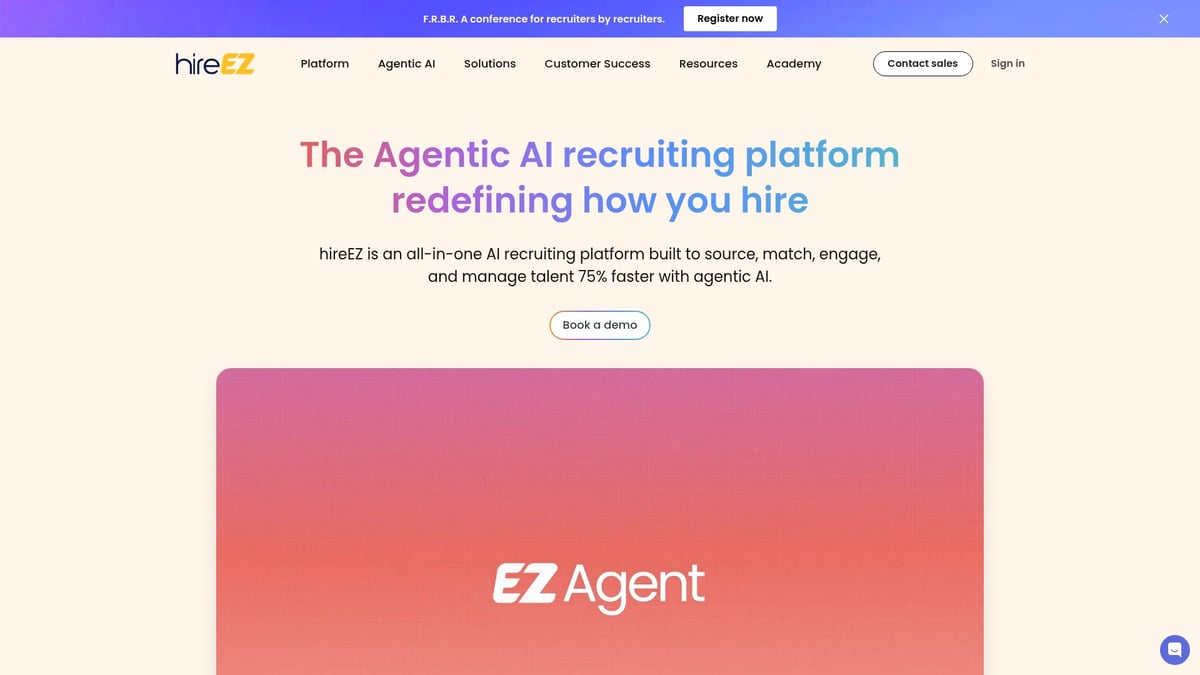
Automated outreach and deep integration with ATS platforms streamline the sourcing process, while robust analytics offer insights into talent pipelines and sourcing strategies. Hiretual’s tiered pricing and free trial make it accessible for a wide range of organizations.
The platform’s advanced search filters and CRM functionality support recruiters focused on proactive talent acquisition and hard-to-fill roles. Some users may require onboarding to fully leverage Hiretual’s advanced features, but the payoff is a more efficient and targeted sourcing strategy.
Agencies and enterprises that need to nurture relationships with top candidates over time will find Hiretual to be one of the most powerful recruiting tools for hr available.
SocialTalent
SocialTalent completes the list of top recruiting tools for hr by focusing on talent development and continuous learning. The platform offers e-learning modules, recruitment best practices, diversity training, and performance tracking for recruiters and hiring managers.

By upskilling HR teams, SocialTalent drives improvements in sourcing, interviewing, and DEI initiatives. Its subscription-based pricing and custom enterprise packages allow organizations to tailor learning to their needs.
The comprehensive content library and expert-led courses provide measurable learning outcomes, supporting long-term HR success. SocialTalent is not a direct sourcing or ATS tool, but its value lies in empowering HR professionals to stay ahead of the latest hiring strategies and compliance requirements.
HR teams that prioritize development and adaptability will find SocialTalent a critical component of their recruiting tools for hr, ensuring they are equipped for the challenges of 2025 and beyond.
How to Choose the Right Recruiting Tools for Your Organization
Selecting the right recruiting tools for hr is a strategic decision that can shape long-term hiring success. As the recruitment landscape evolves, organizations face an overwhelming array of platforms, each promising unique features and results. Understanding how to navigate this landscape ensures your investment delivers true value.
Identifying the best recruiting tools for hr begins with a clear assessment of your organization’s needs. Consider your company size, hiring volume, and the complexity of your recruitment process. For example, a high-growth tech startup may prioritize automation and scalability, while an established enterprise might focus on integration with existing HR systems and compliance features.
Evaluate each solution against key criteria. Integration is crucial—your recruiting tools for hr should connect seamlessly with your current ATS, HRIS, and communication platforms. Scalability ensures the tool grows with your organization. Budget is another vital factor; compare pricing models, and consider the total cost of ownership, including setup, training, and support. Ease of use and intuitive interfaces will drive adoption across your HR team, minimizing resistance and maximizing ROI.
When reviewing options, look for robust support, accessible training resources, and an active user community. It’s wise to leverage trial periods or demo versions to test real-world usability. Examine vendor reputation through independent reviews and testimonials. For organizations seeking advanced features, such as automation or AI-driven screening, consult resources like the Recruiting Automation Tools Overview to understand the landscape and compare solutions.
Successful implementation of recruiting tools for hr often starts with a pilot program. Involve key stakeholders, including recruiters, hiring managers, and IT staff, to gather comprehensive feedback. Use this phase to identify any integration challenges, workflow adjustments, or training needs. Monitor metrics such as time-to-hire, candidate quality, and user satisfaction to measure impact.
Organizations that align recruiting tools for hr with their long-term talent acquisition strategy consistently report stronger outcomes. These tools should not only solve immediate pain points but also support future workforce trends and business growth. By prioritizing adaptability, data-driven decision making, and continuous improvement, HR leaders can ensure their technology investments drive sustained value.
Maximizing ROI: Best Practices for Implementing Recruiting Technology
Maximizing ROI from recruiting tools for hr requires a strategic approach that aligns technology with business goals. A thoughtful implementation plan ensures that investments deliver measurable results, empowering HR teams to work smarter, not harder.
Steps for Success
The first step to realizing value from recruiting tools for hr is securing stakeholder buy-in. Engage leaders and team members early, explaining how new solutions will address specific pain points. Define clear objectives, such as reducing time-to-hire or improving candidate quality, and communicate these goals across the organization.
Comprehensive training is essential. Equip HR staff with practical knowledge of each tool’s features to ensure consistent adoption. Encourage feedback during pilot programs to identify process gaps and collect user insights for continuous refinement.
Analytics and Adaptation
Continuous analytics review is the cornerstone of maximizing ROI with recruiting tools for hr. Track key performance indicators like days-to-offer, source effectiveness, and candidate satisfaction. By leveraging actionable data, HR teams can optimize workflows and sourcing strategies.
Regularly adapting processes based on data insights helps eliminate bottlenecks and improve hiring outcomes. For a deeper understanding of data-driven optimization, explore Data-Driven Decision Making in HR to see how analytics transform recruitment performance.
Human Touch and ROI
While automation accelerates routine tasks, maintaining a balance with personal engagement is crucial. Candidates value authentic communication and transparency throughout the process. HR teams that combine advanced technology with a human touch see stronger employer brands and higher acceptance rates.
Organizations prioritizing candidate experience are more likely to build lasting talent relationships. For additional strategies, review How to Improve Candidate Experience and discover how leading teams blend tech efficiency with meaningful interactions.
